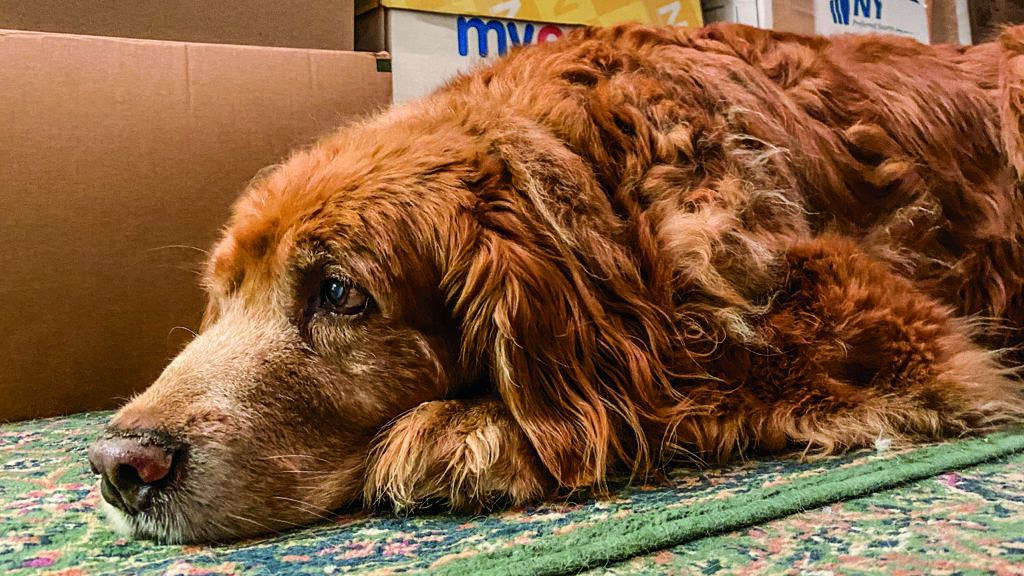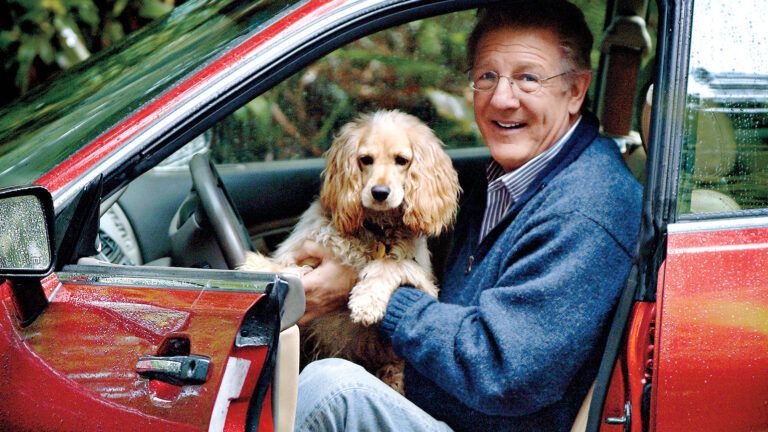After 32 years in the same house, my husband, Mike, and I packed up our (many) belongings and moved to a new town. It was a big deal. There was doubt, confusion and worry. And I’m not just talking about us. Our two dogs, Ernest and Petey, didn’t know what was happening and they were stressed. We found a few ways to make the transition smoother for our furry family members. Here’s how you can too.
Stick to routines as much as possible.
Petey and Ernest go on high alert when they see us packing suitcases for vacation, so imagine how they felt when we started filling boxes with everything from curtains to dishes. Your pet may become clingy, nervous or needy. Try to maintain their regular routine. If your pooch is used to a midday walk, do your best to keep that up. If your kitty likes to snuggle on your lap before bed, resist the urge to trade that cuddle time for more packing time.
Find a familiar friend to babysit on moving day.
Moving day will be hectic. Don’t take the risk of having your pet slip out an open door when the moving crew arrives. Ask a family member or friend to take your pet for the day. Our son babysat the dogs, and they were safe and happy playing with their canine cousin, Zeke.
Keep pet supplies and special toys handy.
We labeled boxes carefully, but nothing seemed to be where we expected after moving. Good thing we packed a box with our dogs’ food, medication, favorite toys and beds, and transported it to our new house ourselves instead of in the moving van. That way our dogs had some familiar things right away. For cats, put their carrier in a room with a few special toys and leave the carrier door open. Cats will come out and explore when they’re ready. Let them get used to one room at a time.
Use calming strategies.
Different houses make different noises. Ernest, who is hard of hearing, slept soundly. Petey was spooked by every creak and whir in the new place. He also reacted to wildlife and traffic passing by. Ignore the noises; your pets will take their cues from you. Try not to leave animals home alone at first. After a few days, Petey got used to the new sounds and settled down. For pets who are having more trouble, consider soothing music or a plug-in dispenser of calming pheromones, available for both dogs and cats.
Help older pets get a feel for new surroundings.
Because our senior dog is vision-impaired, he occasionally got confused or stumbled. We kept paths clear and gently guided Ernest through the house. Dark stairways or narrow hallways may bother some pets. It took Ernest some time to attempt the steep stairs to the second floor. I rewarded his efforts with doggy treats. If your pet has trouble with a part of the new house, look at the area from your pet’s perspective. Is it shadowy? Are there a lot of objects in their path? Does something make a startling sound?
Create a wonderful, inviting space they can make their own.
A new place can be scary and disorienting—but also fun. Take your dog on walks to meet new friends in the neighborhood. Find your pet her own special place in the house. A window with a view. A cozy spot by the fireplace. A nook in the kitchen. One of the selling points of our new home was the lovely big yard for Petey and Ernest to run around and explore! They love it already.
Moving is one of life’s most stressful events. With a little planning and a lot of TLC, you and your pet can maintain your close bond and adjust together. Before long, it’ll be home sweet home.
For daily animal devotions, subscribe to All God’s Creatures magazine.




